Instrumentation Collection
Welcome to the instrumentation collection at the Aberystwyth University Physics Museum. Here you will find many interesting pieces of instrumentation dating from the 19th century, used to take measurements and readings from a variety of different experiments and in lecture demonstrations.
This collection is split into six sections:
APPARATUS
Pistol Tanio
Gan Willats, Cheapside, London. 1890.
Pistol bach a ddefnyddid i danio cymysgeddau o nwyon â gwreichion electrostatig.
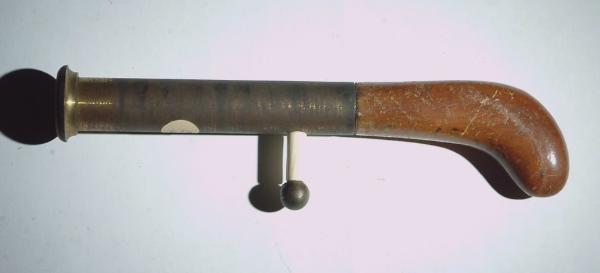
Taniwr Nwy Electrostatig
Gan Clarke, 1900
Byddai'r taniwr hwn yn cael ei ddefnyddio i danio nwyon gan ddefnyddio'r effaith biesodrydanol i gynhyrchu gwreichionyn bychan i danio'r nwy.
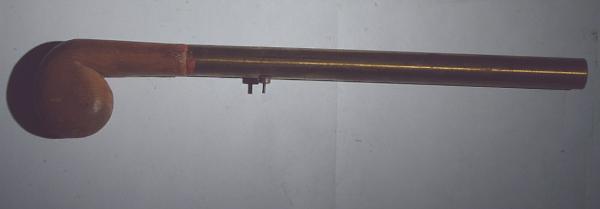
Clorian Ddirdro
Gan Harvey and Peak, Llundain. 1890.
Clorian ddirdro mewn cas petryal. Fe'i defnyddid i ganfod y trorym ar fàs crog.
Hartmann-Braun Electromagnet Accessories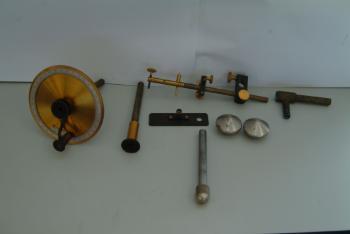
By Hartmann-Braun, Frankfurt
An assortment of apparatus previously used in the Honours lab with a Hartmann-Braun Electromagnet.
Circular Resistance Boxes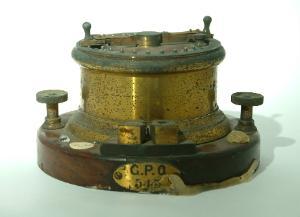
By British Telegraph Manufactory Ltd. London. 1900
These resistance boxes, known as decade boxes, were used to test early telegraph lines. One is labelled ‘G. P. O. 543’.
Radio Resistance Box No. 5710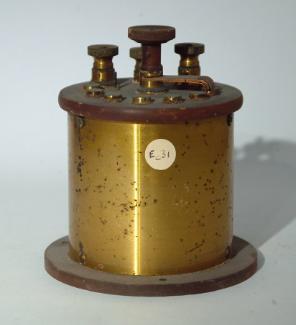
By Nalder Bros. & Co., London. 1910
A decade box used for testing telegraph wires. From B. Davies collection.
Reversing Switch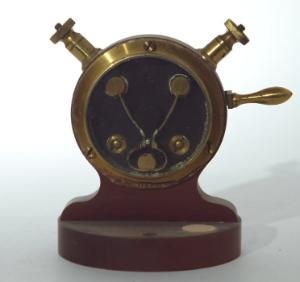
By Elliot Bros., London. 1900
An instrument with four terminals allowing two different pairs of connections so as to reverse the direction of current flow.
Pocket Dynamo Torch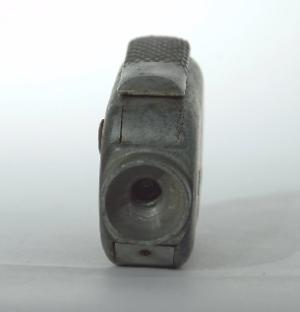
Circa 1920
Bulb missing. Made by a French manufacturer but markings are unreadable. From B. Davies collection.
Electrostatic Cut-Out
By Mr. I. C. Jones. 1925
An electrostatic cut-out for use in charging condensers for spark photography. With typed descriptions and photographs.
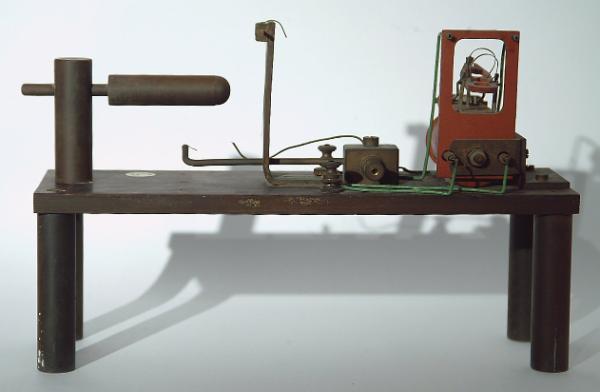
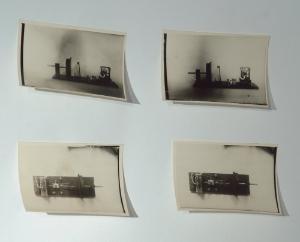
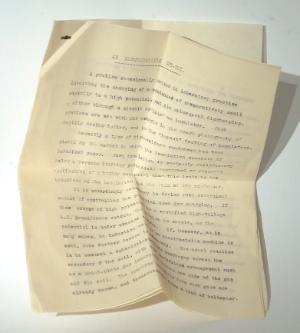
Golau calch
Diwedd y 1800au.
Golau calch ar gyfer llusern daflunio. Roedd fflam ocsihydrogen yn cael ei chyfeirio tuag at silindr o galch (calsiwm ocsid) i gynhyrchu goleuni. Byddai rhywun yn cylchdroi'r calch fel y byddai'r fflam yn cyrraedd arwyneb heb ei losgi. Fe'i defnyddid i oleuo llwyfannau yn y 1860au a 70au.
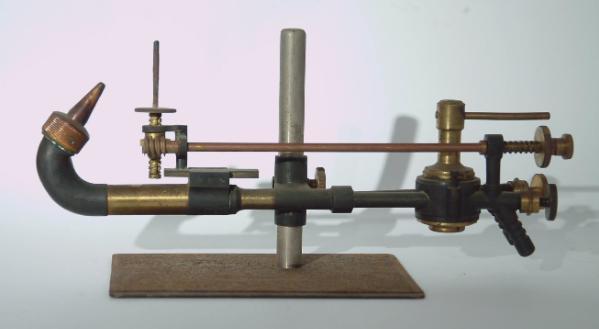
Gyroscope Top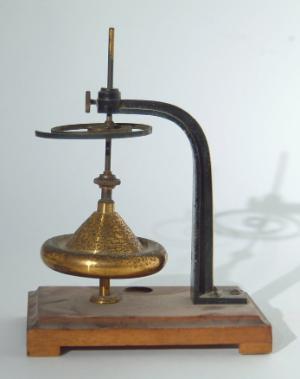
By Newton & Co. 1910.
This piece is missing its case and other accessories. Used to demonstrate gyroscopic motion.
Wet Cell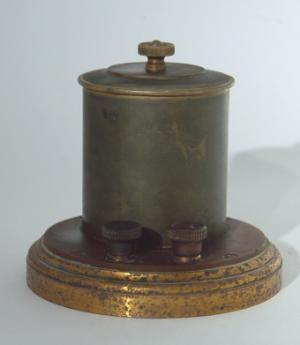
By Robt. W. Paul.
Wet cells such as this one were used in laboratories for the calibration of voltmeters as they produce a very stable voltage.
CALCULATION
Casio AL-8 Calculator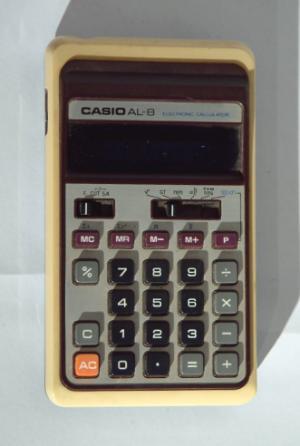
By Casio. 1975
The AL-8 was the first hand-held calculator that was able to display and compute fractions and times. These calculators run on 2x AA batteries.
PIC Slide Rule No. 241
By British Thornton. 1967
This slide rule has many different scales for the working of various different calculations.

Davis-Grinstead Complex Calculator No. 663378
Circa 1900
This slide rule, from the B. Davis collection may have been developed by Mr Davies. Slide Rules were used as early calculators.

Scientific Typewriter
A Hammon brand type writer, unusually when the keys are pressed it does not have the usual lever print action of a regular type writer. Instead when a key is pressed a central cylinder where the letters are mounted rotates and the paper is pressed into it with a lever beind the paper. The type writer includes both greek and latin alphabets as well as calculus notation.
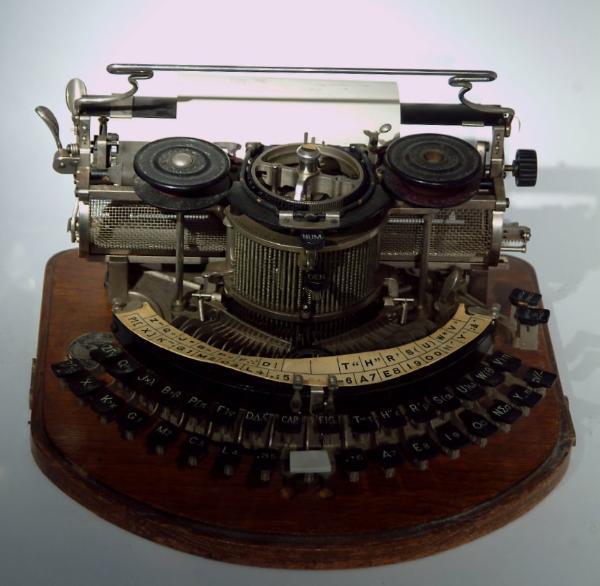
HYDROMETERS
Hydrometers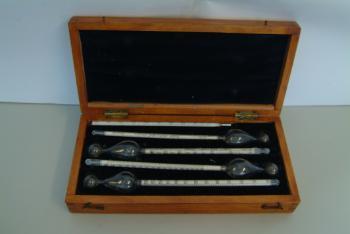
By Becker
A collection of 5 glass hydrometers with mercury weights, used to measure the relative density of a liquid substance.
Hydrometers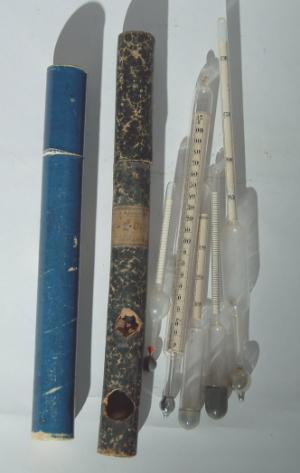
A collection of hydrometers of various scales and sizes. Used to measure the specific gravity, or relative density of a liquid.
Fletcher’s Patent Thermo-Hydrometers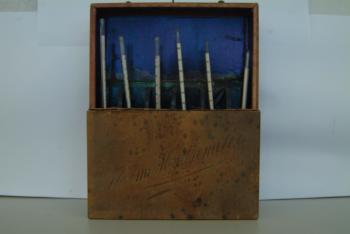
This collection of six hydrometers comes complete in case.
Specific Gravity Bottle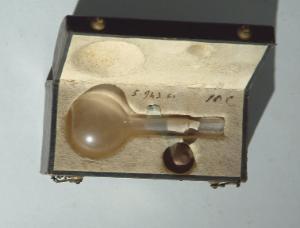
Similar to a hydrometer, this instrument was used to measure the specific gravity/relative density of a substance. This piece comes in a chamois-leather lined box with a brass counterweight.
MEASUREMENT
Protractor
Gan William and Samuel Jones. Early-Mid 1800’s
Hen fath o brotractor pren, gydag wyneb ifori a deial pren, a wnaed gan y brodyr Jones.
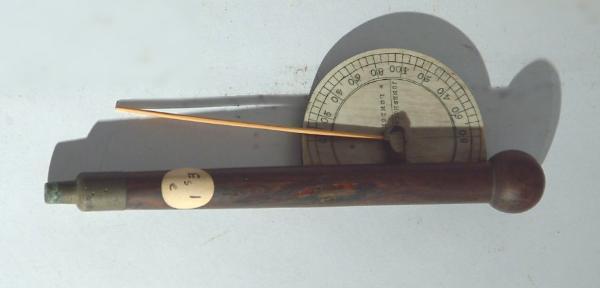
Blwch Micromedr Gwrthrychau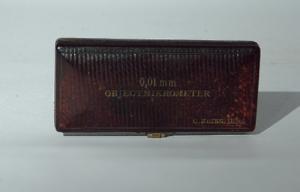
By C. Zeiss, Jena.
Cas gwag ar gyfer micromedr 0.01mm a wnaed gan Zeiss.
Heliostat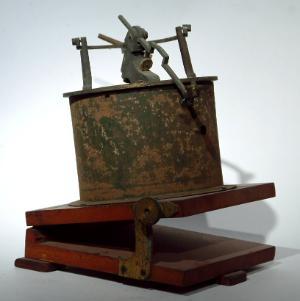
Tau 1890
Heliostat heb ei fecanwaith clocwaith. O bosib fe'i defnyddiwyd gan yr Athro Morgan Lewis mewn darlithoedd tua 1900.
Secstant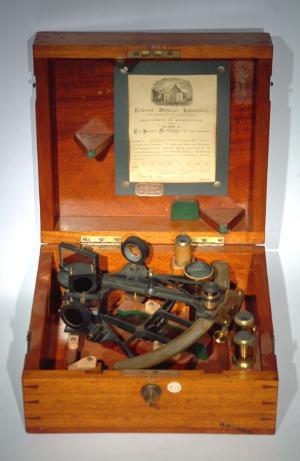
Ardystiedig gan Arsyllfa Kew. 1910.
Fe'i defnyddid i fesur yr ongl rhwng corff seryddol (yr haul, fel arfer, yn draddodiadol) a'r gorwel. O'i ddefnyddio ar y cyd ag amserydd manwl-gywir, gall y secstant helpu'r defnyddiwr i bennu ei ledred ac felly fe ddefnyddid y secstant yn helaeth gan forwyr.
Galvanometer Lamp and Scale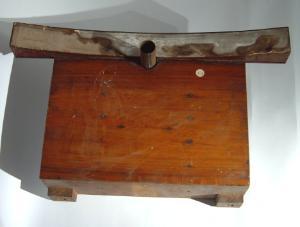
Circa 1890
A table for use with a galvanometer. Both the paraffin lamp and lens system are missing from this piece.
Glass Bulb
Circa 1850
This glass bulb was used as part of experiments to determine the density of air, by allowing air to be drawn in and out of it.
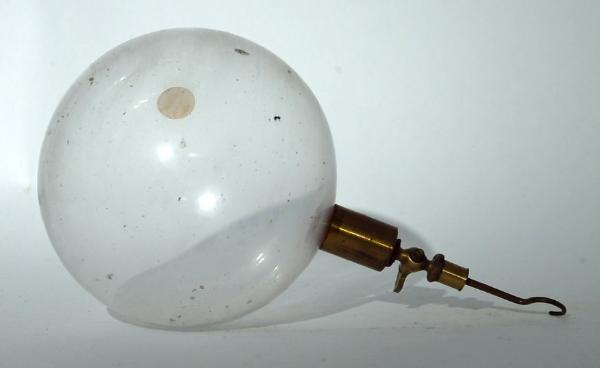
Bismuth Spiral
By Hartmann and Braun, Frankfurt, 1890
This piece of apparatus uses bismuth wire that has been wound in a spiral for use as a magnetic field sensor. The resistance of the wire is proportional to the magnetic field strength.
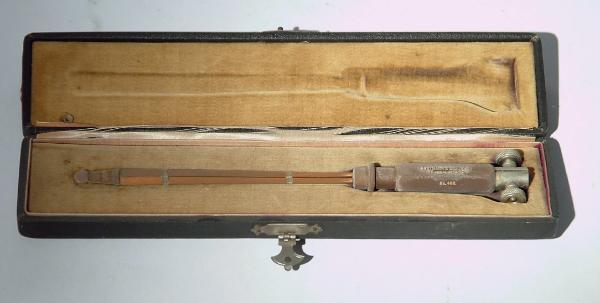
Campbell’s Constant Inductance Rheostat No. R 180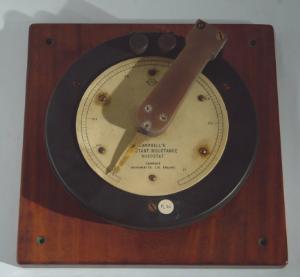
By Cambridge Instrument Co. Ltd. 1920
A rheostat is a device with a variable resistance. Here, wound copper wire has its contact length varied and the resistance of the rheostat depends on this length.
Wheatstone-Type Rheostat No. 4922
By W. G. Pye.
A rheostat is a device with a variable resistance. Here, wound copper wire has its contact length varied and the resistance of the rheostat depends on this length. This model is based off the one developed by Wheatstone.
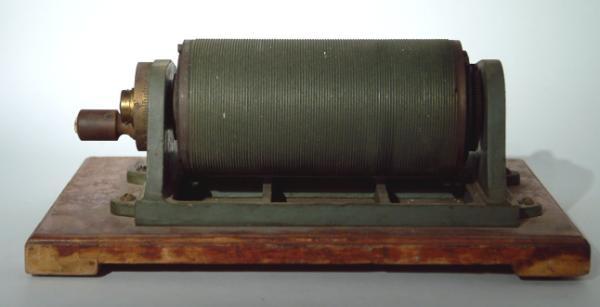
METERS
Weissenberg Rheogoniometer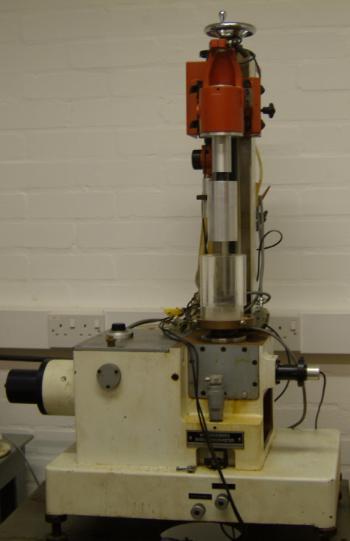
By Sangamo Weston Controls Limited
Dating from the 1960's, this rotational rheometer uses a rotating cylinder to measure the torque exerted on the cylinder by a liquid sample in order to determine the viscosity of the sample.
Boys’ Radio-Micrometer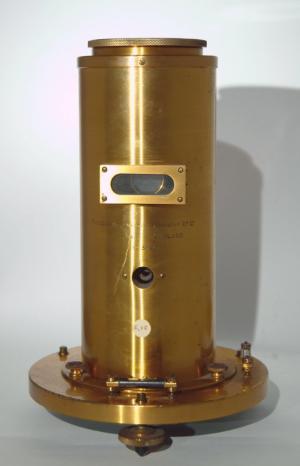
By Cambridge Instrument Co., 1920
This instrument was used to detect infrared radiation (heat) and is said to be able to detect the radiation from a candle, 1 mile away.
Drum Potentiometer
By British Telegraph Manufactory, Ltd. London. 1900
Similar to a rheostat, a potentiometer is a resistor that acts as a voltage divider for the measurement of electric potential.
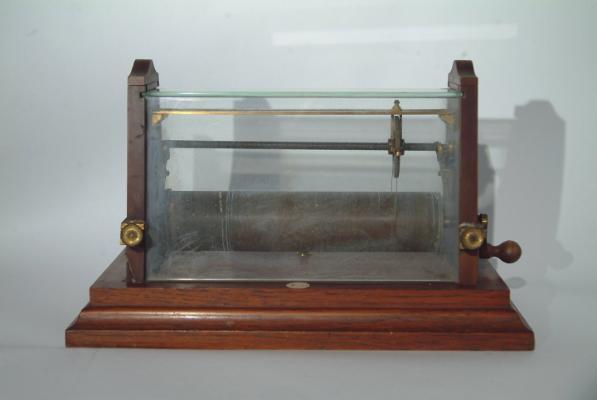
Pocket Voltmeter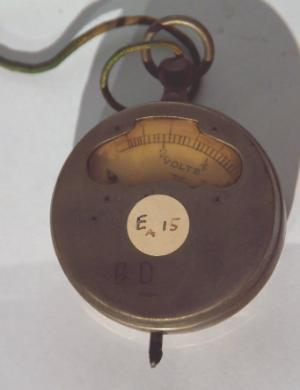
Circa 1910
A pocket voltmeter made of iron and marked with the initials B. D. From the B. Davies collection.
Moving-Iron Ammeter No. 1803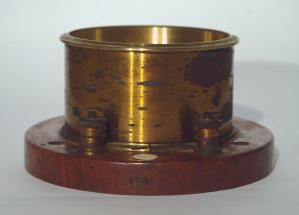
By Easton Anderson and Goolden Ltd. 1905
Evershed’s Patent ammeter for measuring current.
Demonstration Ammeter No. 92983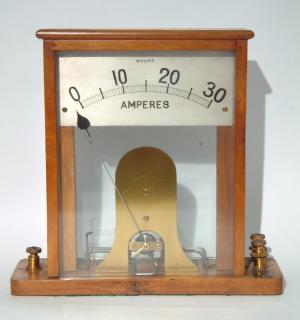
This ammeter appears to be for demonstration purposes. It allows the user to view the meters components when in use.
Moving-Iron Ammeter No. 10115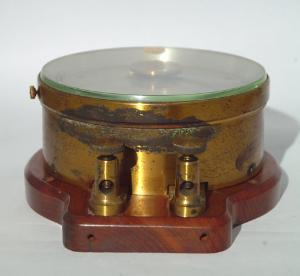
By Crompton. 1894
This ammeter was part of the U. C. W generating plant that was set-up in 1891.
Moving-Iron Voltmeter No. 6975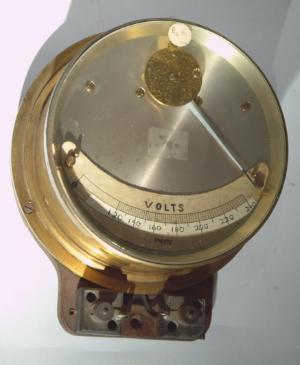
By Crompton. 1894
This voltmeter may have been part of the switchboard of the old University generating plant.
Gravity Ammeter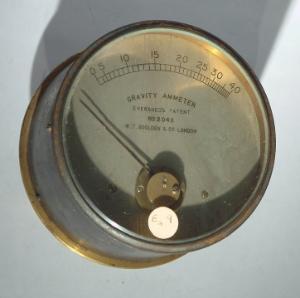
By W. T Goolden & Co. London. 1905
This instrument was part of the switchboard in the original physics lecture room and was later moved up to the large lecture room in King Street. It was used to measure the current in the 110 volt circuit.
Moving-Iron Meter Needle
Circa 1900
This is the needle from a large moving-iron meter. It is marked B. D. From the B. Davies collection.
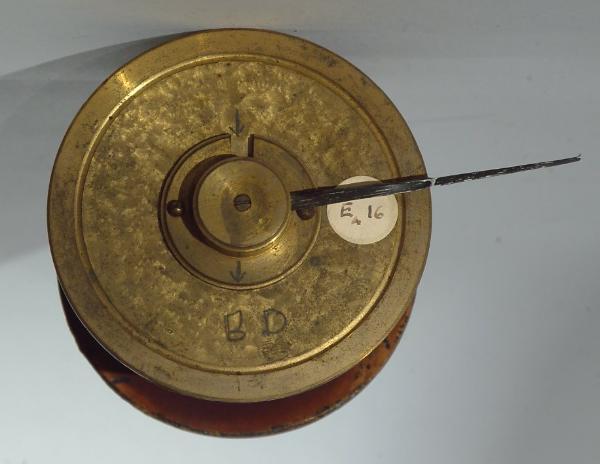
Torsion Balance Ammeter No. 2000A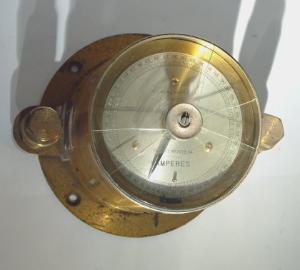
By Siemens Bros. & Co. 1890
Patent No. 766884. This is a very heavy instrument with a broken glass screen. It has a scale of 510 amps.
Ammeter No. 63059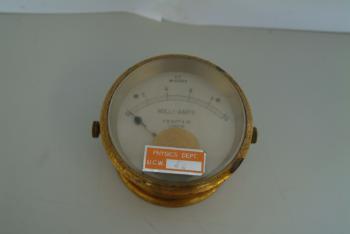
By F. R. Butt
This ammeter bears a Physics Dept. label and such was probably used in laboratory experiments within the department.
Ayrton-Perry Twisted Strip Voltmeter No. 27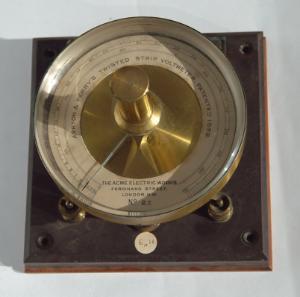
By Acme Electric Works, Ferdinand St., London. 1890
Used to measure potential difference, this piece is complete in case, with certificate.
Ampere Meter No. 5131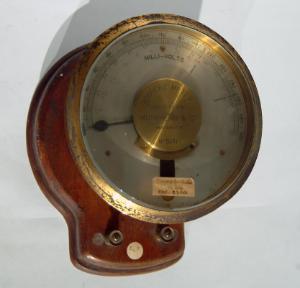
By Muirhead & Co., Westminster. 1900
This ammeter from the B. Davies collection may be of Mr Davies own patent.
Electrolytic Ampere-Hour Meter No. 481146
By R. M Co. 1920
This instrument was used for metering D. C supplies up until 1940.

Electrolytic Ampere-Hour Meter No. 589213
By R. M Co. 1920
Used for metering D. C supplies, this piece differs from No. 481146 as its second mercury reservoir is siphoned from the first.

Vulcan Hour Meter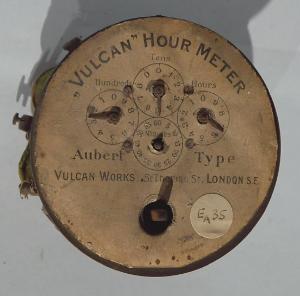
By Vulcan Works, Thomas St. 1890
This is an early Aubert type instrument for metering electricity. The clock runs when electricity is flowing. Only suitable for a fixed load.
Avon Clock Meter No. C7701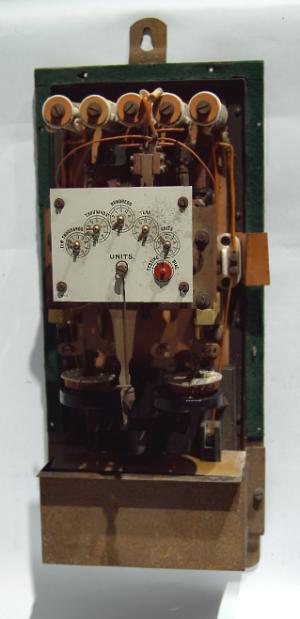
Circa 1910
This ampere-hour meter has a very elaborate mechanism for metering electricity. Two electrically driven pendulums with different periods, drive the dials.
Air Meter No. L 1972
By Griffin and George Ltd.
This instrument is in case with instructions and correction card. Air Meters are used to measure air velocity.
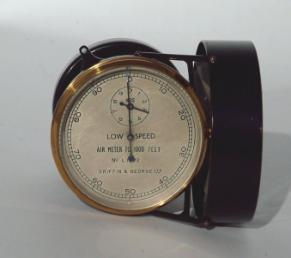
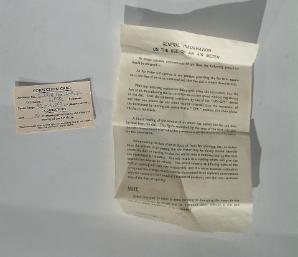
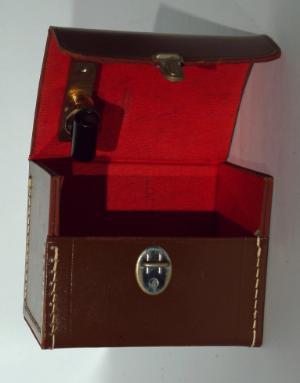
SCALES
Chondrometer
Circa 1830
A Chondrometer is a type of steelyard balance used to measure the density of corn in lb/bushel. The load is placed on the shorter arm, with a counterweight sliding along on the long arm to balance the load and give a value.
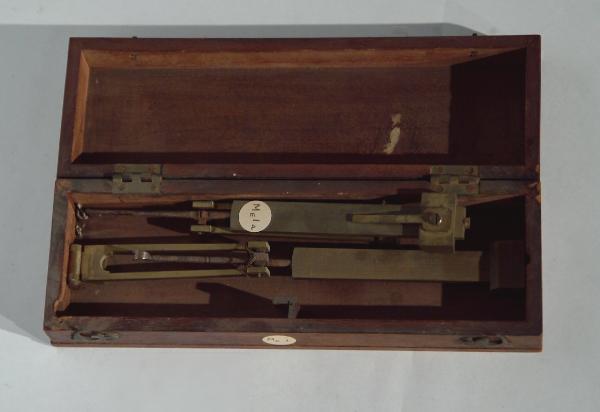
Balance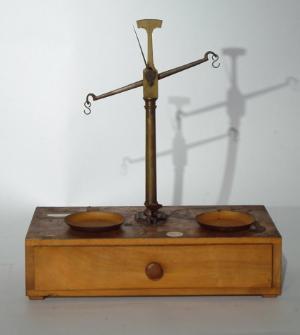
Circa 1890
A small balance scale with a set of weights. The hanging strings are missing.
Precision Scale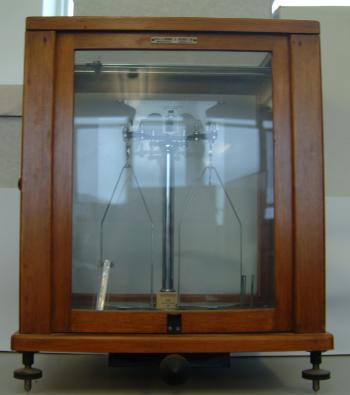
W & J. George and Becker. 1950’s
This set of scales is for the precise measurement of weight. The original weights are missing.
Assay Balance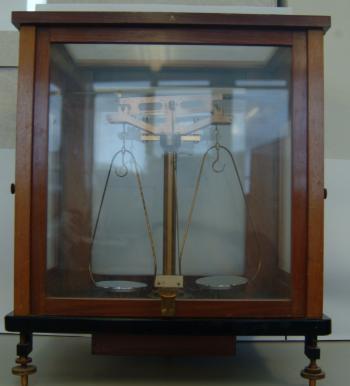
By L. Oerting, London.
These scales were produced to be incredibly accurate and were used extensively in laboratories and chemists.
